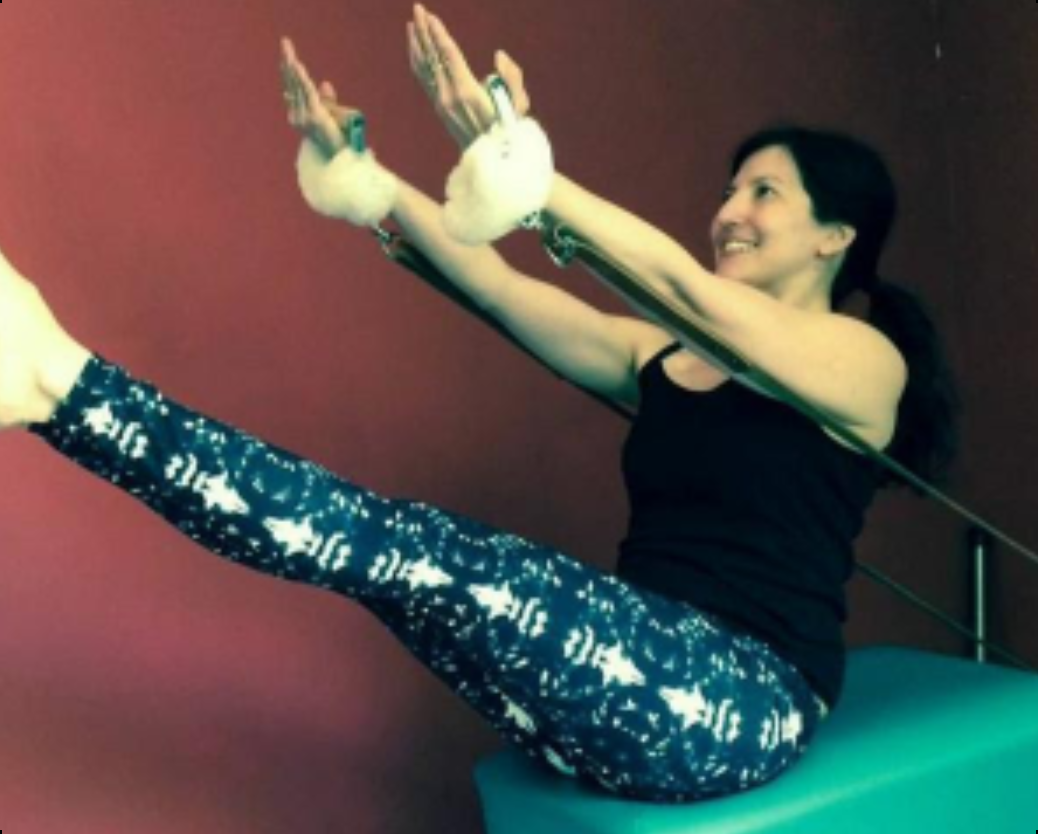Photo by John Lindquist at Houghton Library, Harvard University.
Issue #430
Wednesday, May 1, 2024
The Renaissance of Joe Pilates’ Magic Square
by Rebekah Le Magny
Very likely you have never heard of Pilates’ Magic Square. The Magic Square is undoubtedly one of Joe’s least known apparatus, although others have also “disappeared”. I first became intrigued with the Magic Square in April 2022 when my friend Elaine Ewing revealed her discovery of a series of five color photos of Joe that were previously unknown to the Pilates community. One of the photos in the collection (by photographer John Lindquist) had been circulating for years but only in black and white. Lindquist was the staff photographer for the Jacob’s Pillow Dance Festival, where he worked for 42 summers photographing numerous renowned dancers and choreographers. The black and white photo shows Joe with several of his small apparatus. He holds up his Posture and Poise Apparatus (also known as the headpiece) with one hand. The neck stretcher hangs from a branch. The magic circle is propped against the branch and Joe squeezes an object between his knees. Until 2022, I had assumed that Joe was squeezing the tensometer, a piece of exercise equipment patented by him in 1938 that is believed to be the precursor to the magic circle. The discovery of the color Lindquist photos revealed that the object in question was not in fact the tensometer, but the Magic Square. You can also see the Magic Square in the series of photos of opera singer Roberta Peters taken by photographer Michel Rougier in 1941 for Life magazine, but it is in the background. Joe referred to a number of his small apparatus as “Magic Squares”, including the toe and hand tensometers and the neck stretcher, due to their square shape; however, this article specifically references the apparatus depicted in the sources described above.
The newly discovered Lindquist photos brought to light exciting details about the mysterious apparatus. The square uses an extension spring, like the neck stretcher and toe gizmo. The spring, however, is stretched not by pulling on the sides, but by squeezing them, similarly to the hand tensometer, which had also disappeared from public view for many decades but is enjoying a recent revival. The magic circle, in contrast, uses steel bands that act like compression springs. Of Joe’s apparatus, only the foot corrector and the magic circle do not use extension springs.
When I first saw the Lindquist photos, I thought it would be simple and “fun” to recreate the Magic Square. (I must admit that now I chuckle at the naiveté). Breaking out my ruler, I “guesstimated” the dimensions by comparing the square to the neck stretcher and magic circle in the photo. I contacted the Spanish Pilates equipment maker, Arregon Pilates, which is run by a dynamic mother/daughter duo and was one of the first companies to produce classical Pilates equipment in Europe. This was not Arregon’s first foray into reviving extinct archival Pilates equipment at my behest. They had recently produced an interpretation of the Divana (an apparatus combining a mat, small barrel and reformer), as well as a wunda chair with swiveling archival handles. I knew that they were as passionate about the Pilates method and its history as I was. I sent them what I thought were accurate(ish) measurements, although they examined the photos to produce their own conclusions. It soon became clear that making Pilates equipment was not the “simple” endeavor that I imagined. It took months to produce a first prototype. The mechanism was infinitely more intricate than anticipated and developing the proper spring tension was an arduous task.
A former corporate finance lawyer (let’s be honest, not a particularly talented one), Rebekah Le Magny woke up one morning (figuratively, because she had pulled yet another all-nighter) and decided that stinky negotiating rooms and making the rich richer was no longer the life she wanted to lead. She got certified to teach pilates by Romana Kryzanowska, had a few dozen children (well, four) and has been teaching for over ten years in Paris. She is also certified to teach vinyasa and hatha yoga and teaches pilates and yoga in her “intimate” (tiny)home studio, Atelier R Pilates Yoga in Saint Maur des Fossés, just outside of Paris. When she is not teaching, she enjoys running, swimming, reading (check out The Pilates Book Review and Discussion Club) and trying to figure out ways to feed her family without cooking. She is still a miserable negotiator who cannot even negotiate adequate computer time with her kids. For more information, check out her Facebook page, Atelier R Pilates Yoga and website, www.pilatesyoga-saintmaur.fr.


